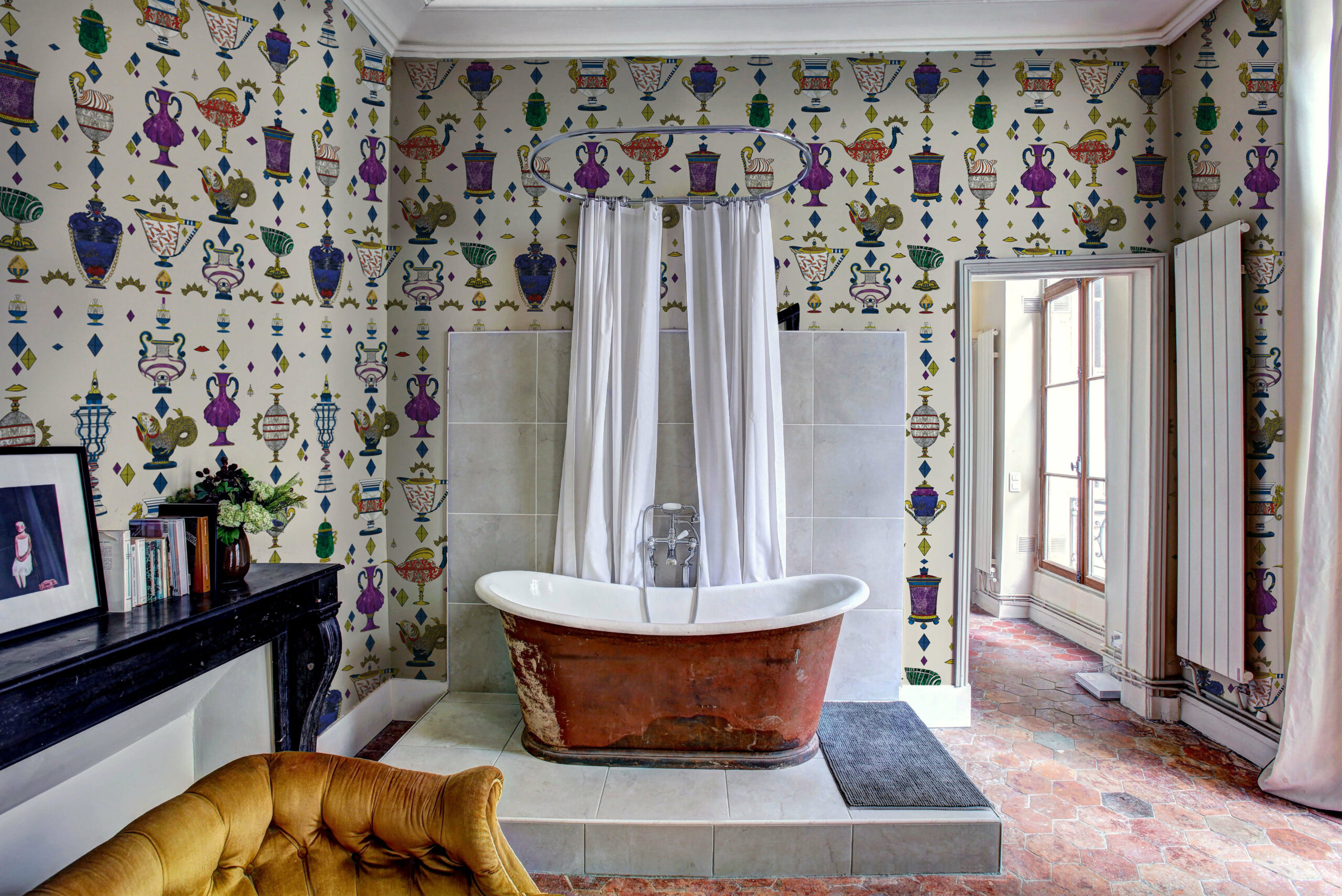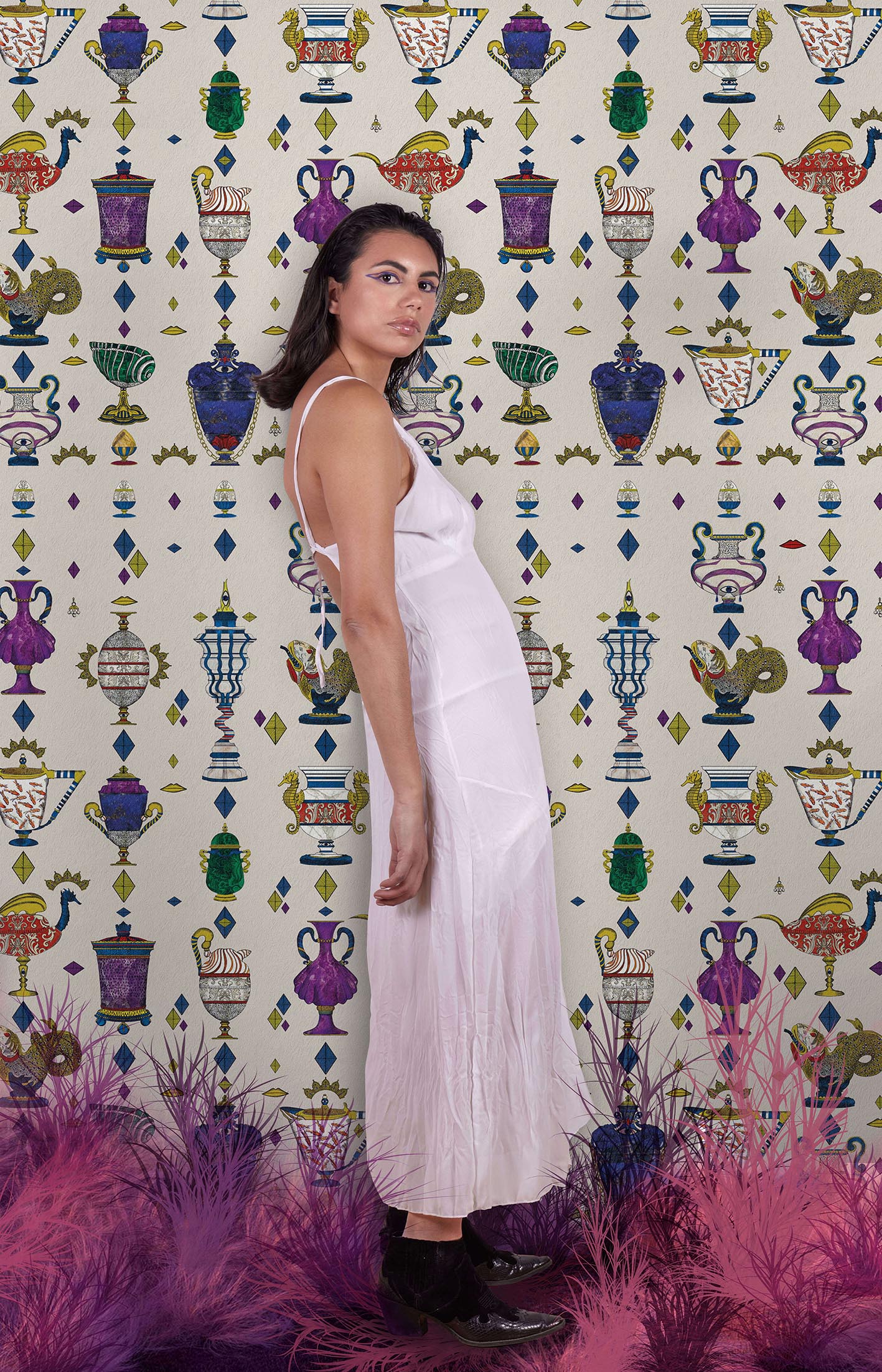Ludovica Ecru
Free
RACCONTI
MAIN COLORS
Background: Beige
***
This wall decoration is freely inspired to her as a woman, but especially to her treasures, her jewels, her style, her courage to be above her time. Thanks to this amazing woman, all Medici collections survived to this day and can prosper in today’s Uffizi galleries and Palatine galleries. If today we can go to Florence and visit one of the oldest and most important art collections in the world, intact and still in its precious context, we owe it to her.
In a society where the family and/or the husband were taking decisions on behalf of women and their upcoming destiny, Anna Maria Luisa de Medici (known as Ludovica) was undisputedly ahead of her time. She was an extraordinarily lover of art and splendor. She was tall, fair-skinned, and had two big and expressive eyes, of a deep dark black colour as her hair was. Her mouth, on the opposite, was very small, the lips fleshy, her teeth ivory white. The voice was quite masculine and her laugh noisy. She used to stay straight like a column with her back, appearing formal and grave. She had a husband to whom she got married in Düsseldorf and that passed away before her. He donated her the title of “Elettrice Palatina”, as well as syphilis, which made her sterile. Ended up single, Ludovica went back to Florence bringing with her jewelry and treasures of immense value; so many art objects, precious furnishing, silverware, porcelain and portraits. Once in the Tuscan capital city, she accomplishes a still inestimable endeavor. She took advantage of the “new right” of Law to defend her heritage and prevent its dispersion.
She obtained an Agreement with Francesco Stefano di Lorenza, which was signed the 31st October 1737 worldwidely known as ‘Family Pact’. According to the dispositions of the pact, the art rarities collected by the Medici’s were transferred to new Grand Duke, as long as those would have been kept in the city of Florence.
Get your quote
MAIN COLORS
Background: Beige
***
This wall decoration is freely inspired to her as a woman, but especially to her treasures, her jewels, her style, her courage to be above her time. Thanks to this amazing woman, all Medici collections survived to this day and can prosper in today’s Uffizi galleries and Palatine galleries. If today we can go to Florence and visit one of the oldest and most important art collections in the world, intact and still in its precious context, we owe it to her.
Description
In a society where the family and/or the husband were taking decisions on behalf of women and their upcoming destiny, Anna Maria Luisa de Medici (known as Ludovica) was undisputedly ahead of her time. She was an extraordinarily lover of art and splendor. She was tall, fair-skinned, and had two big and expressive eyes, of a deep dark black colour as her hair was. Her mouth, on the opposite, was very small, the lips fleshy, her teeth ivory white. The voice was quite masculine and her laugh noisy. She used to stay straight like a column with her back, appearing formal and grave. She had a husband to whom she got married in Düsseldorf and that passed away before her. He donated her the title of “Elettrice Palatina”, as well as syphilis, which made her sterile. Ended up single, Ludovica went back to Florence bringing with her jewelry and treasures of immense value; so many art objects, precious furnishing, silverware, porcelain and portraits. Once in the Tuscan capital city, she accomplishes a still inestimable endeavor. She took advantage of the “new right” of Law to defend her heritage and prevent its dispersion.
She obtained an Agreement with Francesco Stefano di Lorenza, which was signed the 31st October 1737 worldwidely known as ‘Family Pact’. According to the dispositions of the pact, the art rarities collected by the Medici’s were transferred to new Grand Duke, as long as those would have been kept in the city of Florence.


